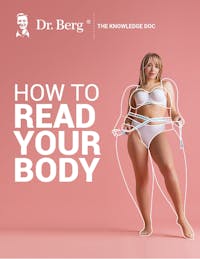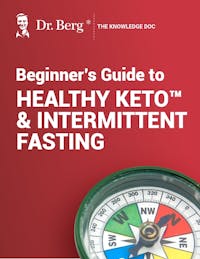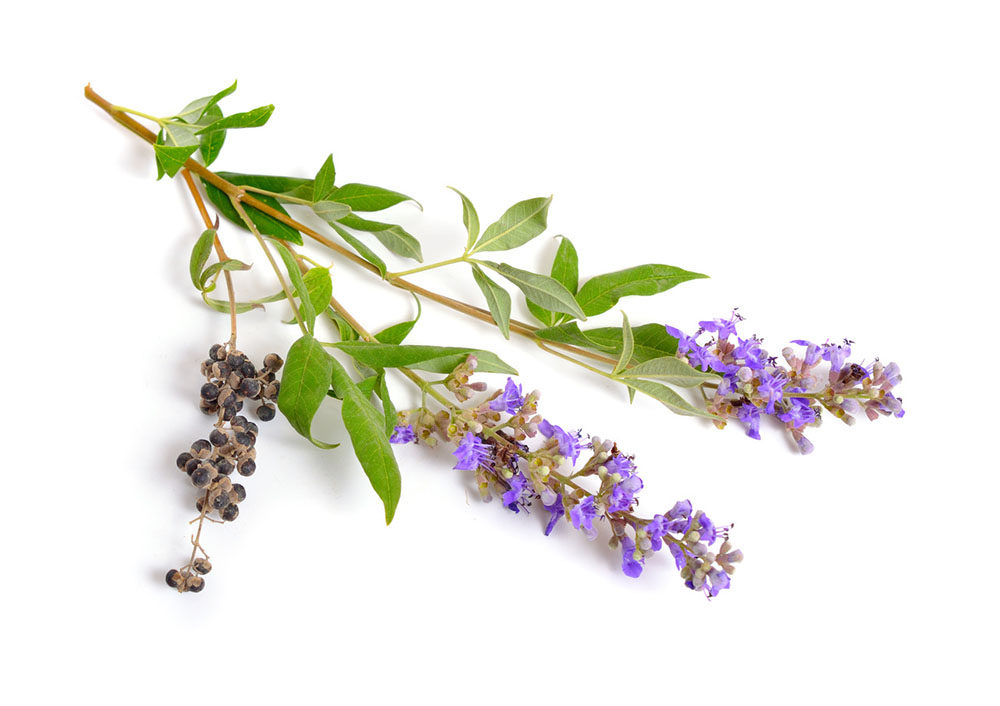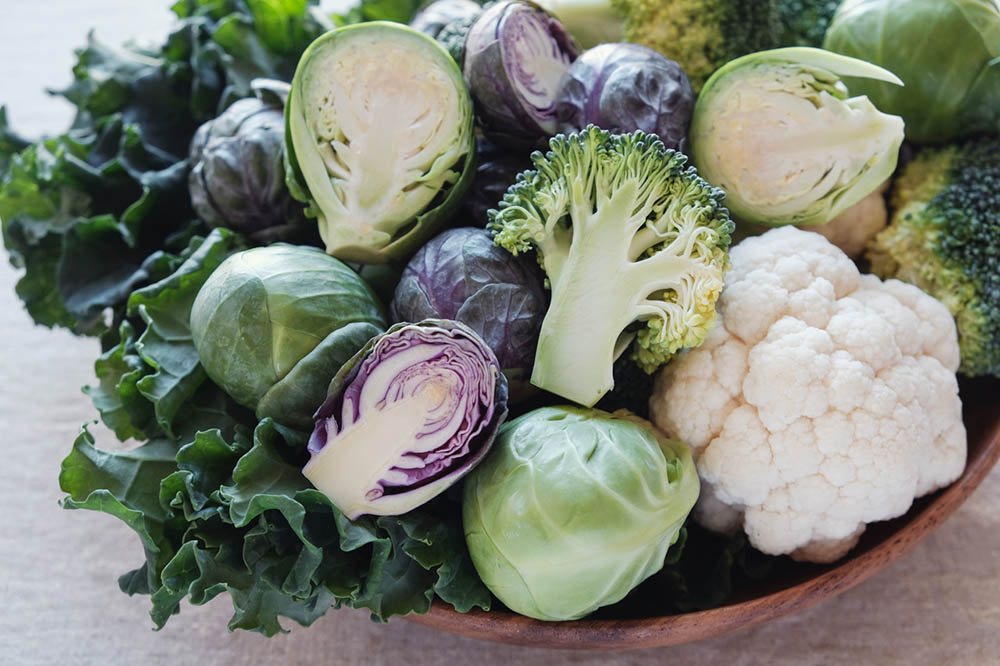Best Remedy for Low Progesterone

How to Read Your Body
Learn to recognize common symptoms and uncover their underlying health issues
Understand the signs of nutrient deficiencies to manage your health
Explore the four metabolic body types and the core factors that influence them
Interpret your body's signals from head to toe to identify potential health concerns

How to Read Your Body
Learn to recognize common symptoms and uncover their underlying health issues
Understand the signs of nutrient deficiencies to manage your health
Explore the four metabolic body types and the core factors that influence them
Interpret your body's signals from head to toe to identify potential health concerns

How to Read Your Body
Learn to recognize common symptoms and uncover their underlying health issues
Understand the signs of nutrient deficiencies to manage your health
Explore the four metabolic body types and the core factors that influence them
Interpret your body's signals from head to toe to identify potential health concerns

How to Read Your Body
Learn to recognize common symptoms and uncover their underlying health issues
Understand the signs of nutrient deficiencies to manage your health
Explore the four metabolic body types and the core factors that influence them
Interpret your body's signals from head to toe to identify potential health concerns

How to Read Your Body
Learn to recognize common symptoms and uncover their underlying health issues
Understand the signs of nutrient deficiencies to manage your health
Explore the four metabolic body types and the core factors that influence them
Interpret your body's signals from head to toe to identify potential health concerns

How to Read Your Body
Learn to recognize common symptoms and uncover their underlying health issues
Understand the signs of nutrient deficiencies to manage your health
Explore the four metabolic body types and the core factors that influence them
Interpret your body's signals from head to toe to identify potential health concerns

How to Read Your Body
Learn to recognize common symptoms and uncover their underlying health issues
Understand the signs of nutrient deficiencies to manage your health
Explore the four metabolic body types and the core factors that influence them
Interpret your body's signals from head to toe to identify potential health concerns

How to Read Your Body
Learn to recognize common symptoms and uncover their underlying health issues
Understand the signs of nutrient deficiencies to manage your health
Explore the four metabolic body types and the core factors that influence them
Interpret your body's signals from head to toe to identify potential health concerns

How to Read Your Body
Learn to recognize common symptoms and uncover their underlying health issues
Understand the signs of nutrient deficiencies to manage your health
Explore the four metabolic body types and the core factors that influence them
Interpret your body's signals from head to toe to identify potential health concerns

How to Read Your Body
Learn to recognize common symptoms and uncover their underlying health issues
Understand the signs of nutrient deficiencies to manage your health
Explore the four metabolic body types and the core factors that influence them
Interpret your body's signals from head to toe to identify potential health concerns

How to Read Your Body
Learn to recognize common symptoms and uncover their underlying health issues
Understand the signs of nutrient deficiencies to manage your health
Explore the four metabolic body types and the core factors that influence them
Interpret your body's signals from head to toe to identify potential health concerns

How to Read Your Body
Learn to recognize common symptoms and uncover their underlying health issues
Understand the signs of nutrient deficiencies to manage your health
Explore the four metabolic body types and the core factors that influence them
Interpret your body's signals from head to toe to identify potential health concerns

How to Read Your Body
Learn to recognize common symptoms and uncover their underlying health issues
Understand the signs of nutrient deficiencies to manage your health
Explore the four metabolic body types and the core factors that influence them
Interpret your body's signals from head to toe to identify potential health concerns

How to Read Your Body
Learn to recognize common symptoms and uncover their underlying health issues
Understand the signs of nutrient deficiencies to manage your health
Explore the four metabolic body types and the core factors that influence them
Interpret your body's signals from head to toe to identify potential health concerns

How to Read Your Body
Learn to recognize common symptoms and uncover their underlying health issues
Understand the signs of nutrient deficiencies to manage your health
Explore the four metabolic body types and the core factors that influence them
Interpret your body's signals from head to toe to identify potential health concerns

How to Read Your Body
Learn to recognize common symptoms and uncover their underlying health issues
Understand the signs of nutrient deficiencies to manage your health
Explore the four metabolic body types and the core factors that influence them
Interpret your body's signals from head to toe to identify potential health concerns

How to Read Your Body
Learn to recognize common symptoms and uncover their underlying health issues
Understand the signs of nutrient deficiencies to manage your health
Explore the four metabolic body types and the core factors that influence them
Interpret your body's signals from head to toe to identify potential health concerns

Beginner’s Guide to Healthy Keto & Intermittent Fasting
Receive a step-by-step guide to starting Healthy Keto® and intermittent fasting
Learn about foundational principles and best practices for beginners
Get detailed visual guidance on portion sizes and meal composition
Discover how to set achievable goals and monitor your progress
Find practical tips for overcoming common challenges and staying motivated

Beginner’s Guide to Healthy Keto & Intermittent Fasting
Receive a step-by-step guide to starting Healthy Keto® and intermittent fasting
Learn about foundational principles and best practices for beginners
Get detailed visual guidance on portion sizes and meal composition
Discover how to set achievable goals and monitor your progress
Find practical tips for overcoming common challenges and staying motivated

Beginner’s Guide to Healthy Keto & Intermittent Fasting
Receive a step-by-step guide to starting Healthy Keto® and intermittent fasting
Learn about foundational principles and best practices for beginners
Get detailed visual guidance on portion sizes and meal composition
Discover how to set achievable goals and monitor your progress
Find practical tips for overcoming common challenges and staying motivated

Beginner’s Guide to Healthy Keto & Intermittent Fasting
Receive a step-by-step guide to starting Healthy Keto® and intermittent fasting
Learn about foundational principles and best practices for beginners
Get detailed visual guidance on portion sizes and meal composition
Discover how to set achievable goals and monitor your progress
Find practical tips for overcoming common challenges and staying motivated

Beginner’s Guide to Healthy Keto & Intermittent Fasting
Receive a step-by-step guide to starting Healthy Keto® and intermittent fasting
Learn about foundational principles and best practices for beginners
Get detailed visual guidance on portion sizes and meal composition
Discover how to set achievable goals and monitor your progress
Find practical tips for overcoming common challenges and staying motivated

Beginner’s Guide to Healthy Keto & Intermittent Fasting
Receive a step-by-step guide to starting Healthy Keto® and intermittent fasting
Learn about foundational principles and best practices for beginners
Get detailed visual guidance on portion sizes and meal composition
Discover how to set achievable goals and monitor your progress
Find practical tips for overcoming common challenges and staying motivated

Beginner’s Guide to Healthy Keto & Intermittent Fasting
Receive a step-by-step guide to starting Healthy Keto® and intermittent fasting
Learn about foundational principles and best practices for beginners
Get detailed visual guidance on portion sizes and meal composition
Discover how to set achievable goals and monitor your progress
Find practical tips for overcoming common challenges and staying motivated

Beginner’s Guide to Healthy Keto & Intermittent Fasting
Receive a step-by-step guide to starting Healthy Keto® and intermittent fasting
Learn about foundational principles and best practices for beginners
Get detailed visual guidance on portion sizes and meal composition
Discover how to set achievable goals and monitor your progress
Find practical tips for overcoming common challenges and staying motivated

Beginner’s Guide to Healthy Keto & Intermittent Fasting
Receive a step-by-step guide to starting Healthy Keto® and intermittent fasting
Learn about foundational principles and best practices for beginners
Get detailed visual guidance on portion sizes and meal composition
Discover how to set achievable goals and monitor your progress
Find practical tips for overcoming common challenges and staying motivated

Beginner’s Guide to Healthy Keto & Intermittent Fasting
Receive a step-by-step guide to starting Healthy Keto® and intermittent fasting
Learn about foundational principles and best practices for beginners
Get detailed visual guidance on portion sizes and meal composition
Discover how to set achievable goals and monitor your progress
Find practical tips for overcoming common challenges and staying motivated

Beginner’s Guide to Healthy Keto & Intermittent Fasting
Receive a step-by-step guide to starting Healthy Keto® and intermittent fasting
Learn about foundational principles and best practices for beginners
Get detailed visual guidance on portion sizes and meal composition
Discover how to set achievable goals and monitor your progress
Find practical tips for overcoming common challenges and staying motivated

Beginner’s Guide to Healthy Keto & Intermittent Fasting
Receive a step-by-step guide to starting Healthy Keto® and intermittent fasting
Learn about foundational principles and best practices for beginners
Get detailed visual guidance on portion sizes and meal composition
Discover how to set achievable goals and monitor your progress
Find practical tips for overcoming common challenges and staying motivated

Beginner’s Guide to Healthy Keto & Intermittent Fasting
Receive a step-by-step guide to starting Healthy Keto® and intermittent fasting
Learn about foundational principles and best practices for beginners
Get detailed visual guidance on portion sizes and meal composition
Discover how to set achievable goals and monitor your progress
Find practical tips for overcoming common challenges and staying motivated

Beginner’s Guide to Healthy Keto & Intermittent Fasting
Receive a step-by-step guide to starting Healthy Keto® and intermittent fasting
Learn about foundational principles and best practices for beginners
Get detailed visual guidance on portion sizes and meal composition
Discover how to set achievable goals and monitor your progress
Find practical tips for overcoming common challenges and staying motivated

Beginner’s Guide to Healthy Keto & Intermittent Fasting
Receive a step-by-step guide to starting Healthy Keto® and intermittent fasting
Learn about foundational principles and best practices for beginners
Get detailed visual guidance on portion sizes and meal composition
Discover how to set achievable goals and monitor your progress
Find practical tips for overcoming common challenges and staying motivated

Beginner’s Guide to Healthy Keto & Intermittent Fasting
Receive a step-by-step guide to starting Healthy Keto® and intermittent fasting
Learn about foundational principles and best practices for beginners
Get detailed visual guidance on portion sizes and meal composition
Discover how to set achievable goals and monitor your progress
Find practical tips for overcoming common challenges and staying motivated

Beginner’s Guide to Healthy Keto & Intermittent Fasting
Receive a step-by-step guide to starting Healthy Keto® and intermittent fasting
Learn about foundational principles and best practices for beginners
Get detailed visual guidance on portion sizes and meal composition
Discover how to set achievable goals and monitor your progress
Find practical tips for overcoming common challenges and staying motivated
Trouble sleeping, PMS, headaches, anxiety... Those can all be symptoms that come along with low progesterone. If these sound familiar to you, then it is time to find some relief. It is time to get your hormones back in balance. But what is the best remedy for low progesterone?
Read on to learn about my favorite natural approach to boosting this hormone.
In this article, I will discuss:
What does progesterone do?
Progesterone is one of the female sex hormones. It is released by the ovaries along with estrogen. Estrogen and progesterone work in concert together. They are opposing hormones. This means that they help to balance out each other's effects in the body.

This hormone is a key player when it comes to the menstrual cycle. It is also key to having a healthy pregnancy. And in addition to those, it also affects your fluid levels, state of calm, sleep, and other hormones.
Regulates the menstrual cycle. It is important in the second part of the cycle. This is called the luteal phase.
Prepares the uterine lining for pregnancy. Once you ovulate, it helps get things ready for fertilization.
Supports survival of the fetus. While you are pregnant, it helps keep the baby healthy.
Acts as a pre-hormone. This means it can be turned into other hormones.
Has a calming effect in the body. It can help keep anxiety in check and help you sleep well.
Acts as a diuretic. It gets rid of excess fluid in the body.
This hormone has a large number of effects on the body. So it is important to keep your progesterone levels in the healthy range.
But why does this hormone get out of balance in the first place? What causes its levels to drop too low?
Why do progesterone levels drop?
Hot flashes, mood swings, and insomnia are all common signs that a woman is going through menopause. A natural aging process, menopause brings about a lot of changes in a woman's body.
This is because when a woman hits her 40's or 50's, hormone levels change. There is a natural decline in the amount of sex hormones produced in the body.
Most of us think of estrogen levels when we think of these changes. But progesterone is actually even more affected during menopause than estrogen is.
Menopause is the major cause of low progesterone.
At menopause, there is a moderate drop in estrogen production. But there is an even more severe drop in progesterone production. This causes the estrogen to progesterone ratio to become altered. All of a sudden, estrogen has become dominant.
Remember, progesterone is the opposing hormone to estrogen. So when progesterone levels drop even more than estrogen levels do, the balance between these two hormones is upset.
That can lead to a whole host of symptoms and issues in the body. Estrogen dominance can be very harmful.
Along with changes with age, there are a few other issues that can make progesterone levels drop.
Low fat or cholesterol intake. Fat and cholesterol are key building blocks for hormones. So if we don't get enough of them in our diets, then we won't be able to make enough progesterone. Taking statins can also be a problem.
Too much stress. If we are under a lot of stress, our bodies will use its resources to make cortisol to deal with the stress. This will divert resources from being able to make progesterone.
Whatever the cause of your low levels, a hormone imbalance related to progesterone can create a long list of symptoms in the body.
What are the symptoms of low progesterone levels?
When you have low levels of progesterone, the body takes a toll. And that can extend far beyond your reproductive system and your menstrual cycle. The symptoms can affect your whole body. They can lead to everything from sleep problems to weight gain.
These are some of the symptoms of low progesterone levels.
Anxiety.
Sleep problems.
Headache.
Premenstrual syndrome (PMS).
Weight gain.
Infertility.
Fluid retention.
Painful breasts.
These symptoms can become quite overwhelming for some. They can even interfere with daily activities. When you can't sleep, get headaches, have discomfort in your body, and feel anxious, you start to feel less and less like yourself.
That is no way to live.
If you are experiencing the symptoms above, then it is time to do something about it. These symptoms do not need to be your new normal.
Luckily, there are effective natural remedies that can help.
What is the best remedy for low progesterone?
If your progesterone levels are too low, what can you do about it?
Many women take wild yam as a natural option. While it can have positive results when it comes to menopausal symptoms, the problem is that it is really a phytoestrogen. It isn't something that actually boosts progesterone. A phytoestrogen is something naturally found in food that mimics the effect of estrogen in the body. So while wild yam can help with low estrogen, it isn't the best option for progesterone levels.
A much better solution for this is to combine chaste tree berry and DIM. These two are a great combination. They are my top recommendations for the best low progesterone natural treatment.
1. Chaste tree berry

Chaste tree is a plant that can be used medicinally to support healthy hormonal balance. It comes from the plant Vitex angus-castus.
It is a great choice when it comes to progesterone levels. This natural remedy can also help improve other symptoms of menopause like hot flashes and night sweats. Chaste tree berry also supports healthy monthly cycles. It may help with other symptoms like mood swings, cramps, and more.
2. DIM

DIM stands for diindolylmethane. DIM is a compound that is found in cruciferous vegetables.
When you take a DIM supplement, you are essentially taking a super concentrated extract of cruciferous vegetables. This allows you to get the benefits of healthy veggies like broccoli, kale, arugula, Brussel's sprouts, cauliflower, etc. But instead of having to eat mass amounts of them every day, you can take a small amount of DIM.
DIM helps support female hormone balance. It is useful if you have imbalances in this area and the related symptoms.
For progesterone deficiency, combine chaste tree berry and DIM. Take both of these as a supplement, according to the directions on the label.
Both of these natural options are included in my estrogen balance formula. This product is designed specifically for women and supports the body through menopause. If you have low progesterone symptoms, this product could be well worth a try.
What else can I do?
Along with the remedies listed above, these tips can also help you find balance.
1. Eat enough fat.
Fats serve many roles in the body, including helping you to produce hormones. If you aren't getting enough fat or cholesterol, you won't have the building blocks you need to make hormones.
So you need to eat enough fat in your diet. That will allow you to make enough of the hormones you need. Going ultra-low fat with your diet will make things worse. So choose healthy fats and include them in your daily diet.
This is one reason why the ketogenic diet can actually be a really healthy option when it comes to hormone balance. Learn more about the ketogenic diet, women, and hormones here.
2. Manage stress.
Being under a lot of stress can also cause progesterone levels to drop. This is because if when we are stressed, the body will divert resources to make stress hormones rather than progesterone.
So become aware of your sources of stress. And watch your reactions to stressful events. Learn to decrease stress and manage your reactions to it so you can keep your hormone health in check. Here are some great ideas for how to relieve stress.
The bottom line
Want to boost your progesterone levels? I highly recommend chaste tree berry and DIM. These two herbal remedies can have positive results and help you start feeling like yourself again.
You will also want to eat plenty of healthy fats and manage your stress levels to stay healthy.
Do you have the symptoms of low progesterone listed above? Have you tried chaste tree or DIM? Give them a go. And let us know how you do in the comments section below.
Up Next:
Previous blog
Iodine Beyond the ThyroidNext blog
Is Propylene Glycol DangerousTags

Popular
08/21/2024
55.7K views
02/23/2025
46.8K views
11/18/2024
281.1K views
03/18/2024
11/21/2022




